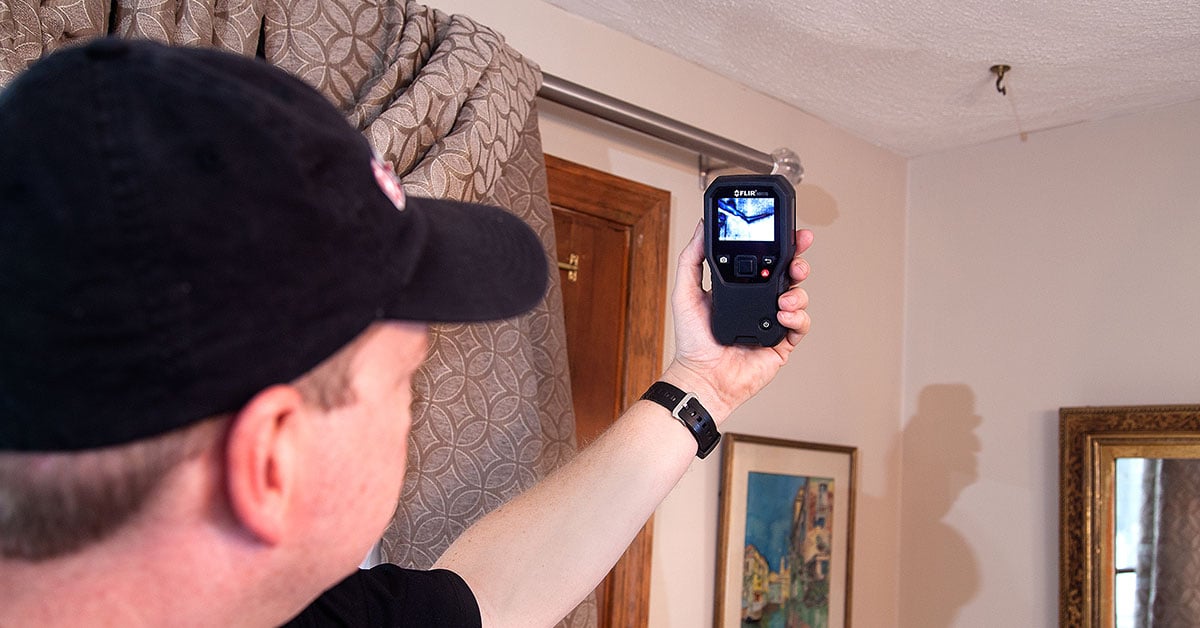Guide To Water Leak Discovery In The House
Guide To Water Leak Discovery In The House
Blog Article
The writer is making several good points on Finding hidden leaks as a whole in this post followed below.

Early detection of dripping water lines can reduce a prospective disaster. Some little water leakages might not be noticeable.
1. Analyze the Water Meter
Every home has a water meter. Inspecting it is a surefire manner in which assists you find leaks. For starters, turn off all the water sources. Make certain nobody will certainly purge, utilize the faucet, shower, run the cleaning equipment or dishwashing machine. From there, go to the meter as well as watch if it will alter. Because no one is utilizing it, there ought to be no activities. If it moves, that shows a fast-moving leakage. Furthermore, if you identify no changes, wait an hour or two and examine back again. This means you may have a slow leak that could even be underground.
2. Examine Water Intake
Evaluate your water expenses as well as track your water intake. As the one paying it, you ought to see if there are any kind of inconsistencies. If you identify sudden changes, in spite of your consumption coinciding, it suggests that you have leaks in your plumbing system. Remember, your water bill should fall under the exact same range monthly. A sudden spike in your costs indicates a fast-moving leakage.
Meanwhile, a constant boost on a monthly basis, even with the exact same behaviors, shows you have a sluggish leakage that's additionally gradually escalating. Call a plumber to completely inspect your property, especially if you really feel a cozy location on your floor with piping beneath.
3. Do a Food Coloring Test
When it comes to water consumption, 30% comes from commodes. Examination to see if they are running properly. Decrease flecks of food color in the tank and wait 10 minutes. There's a leakage between the tank as well as dish if the color somehow infiltrates your bowl throughout that time without flushing.
4. Asses Exterior Lines
Do not fail to remember to examine your exterior water lines too. Test spigots by connecting a yard hose pipe. Must water seep out of the connection, you have a loose rubber gasket. Change this and also make sure all connections are tight. If you've got a lawn sprinkler, it will help get it expertly took a look at as well as preserved every year. One small leak can throw away tons of water and spike your water costs.
5. Assess the scenario as well as examine
House owners need to make it a routine to check under the sink counters as well as also inside cupboards for any bad odor or mold development. These 2 red flags indicate a leak so prompt attention is called for. Doing routine examinations, also bi-annually, can conserve you from a major trouble.
Inspect for discolorations and weakening as the majority of pipes and also appliances have a life span. If you suspect leaking water lines in your plumbing system, don't wait for it to intensify.
Early discovery of dripping water lines can mitigate a potential calamity. Some small water leaks might not be visible. Examining it is a proven means that aids you find leaks. One small leakage can throw away bunches of water and also surge your water expense.
If you think leaking water lines in your plumbing system, don't wait for it to rise.
WARNING SIGNS OF WATER LEAKAGE BEHIND THE WALL
PERSISTENT MUSTY ODORS
As water slowly drips from a leaky pipe inside the wall, flooring and sheetrock stay damp and develop an odor similar to wet cardboard. It generates a musty smell that can help you find hidden leaks.
MOLD IN UNUSUAL AREAS
Mold usually grows in wet areas like kitchens, baths and laundry rooms. If you spot the stuff on walls or baseboards in other rooms of the house, it’s a good indicator of undetected water leaks.
STAINS THAT GROW
When mold thrives around a leaky pipe, it sometimes takes hold on the inside surface of the affected wall. A growing stain on otherwise clean sheetrock is often your sign of a hidden plumbing problem.
PEELING OR BUBBLING WALLPAPER / PAINT
This clue is easy to miss in rooms that don’t get much use. When you see wallpaper separating along seams or paint bubbling or flaking off the wall, blame sheetrock that stays wet because of an undetected leak.
BUCKLED CEILINGS AND STAINED FLOORS
If ceilings or floors in bathrooms, kitchens or laundry areas develop structural problems, don’t rule out constant damp inside the walls. Wet sheetrock can affect adjacent framing, flooring and ceilings.
https://www.servicemasterbyzaba.com/blog/how-to-detect-water-leakage-in-walls/

Do you really like more info about Leaking water lines? Put feedback down below. We would be interested to hear your reactions about this piece. Hoping that you visit us again soon. Do you know about someone else who is occupied with the subject? Be sure promote it. Thank you for your time. Visit again soon.
Report this page